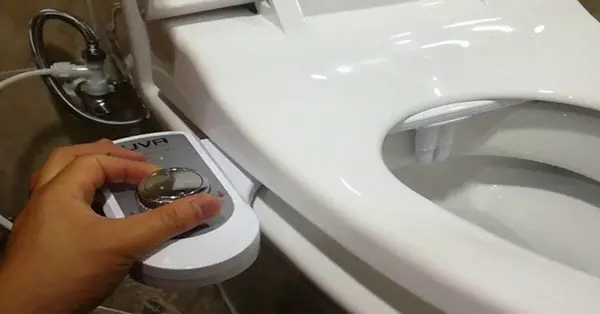
Why Some Train Toilets Discharge Waste Directly onto Tracks
In many parts of the world, including Vietnam, certain trains still use a direct discharge system for toilet waste, releasing it directly onto the railway tracks.
Introduction:
Despite advancements in transportation and sanitation technologies, some trains continue to utilize a system where toilet waste is expelled directly onto the tracks. This practice raises questions about its environmental impact and the rationale behind its continued use.
1. Historical Context of Direct Discharge Systems
Historically, trains were designed with hopper toilets that allowed waste to fall directly onto the tracks. This design was cost-effective and simplified waste management during travel. However, as environmental awareness grew, many countries began transitioning to more hygienic and environmentally friendly systems.
2. Reasons for Continued Use in Certain Regions
In some regions, particularly where rail infrastructure is older or funding for upgrades is limited, the direct discharge system remains in use. Proponents argue that the vast majority of railway lines are located in less populated areas, and the natural elements help to dilute and decompose the waste. Additionally, the design of these systems prevents waste from accumulating within the train, reducing odors and maintenance issues.
3. Environmental and Health Concerns
Despite the rationale for its use, the direct discharge system poses several environmental and health risks. Waste deposited on the tracks can contaminate soil and water sources, especially near populated areas. Moreover, the accumulation of waste can lead to unpleasant odors and attract pests.
4. Modern Alternatives and Upgrades
Recognizing the drawbacks of the direct discharge system, many countries have invested in modern toilet technologies for trains. These include vacuum toilets and chemical holding tanks that store waste in sealed containers, which are emptied at designated facilities. Such systems prevent contamination and are more hygienic for passengers and the environment.
Conclusion:
While the direct discharge system for train toilets may have been a practical solution in the past, its environmental and health implications necessitate a shift towards more sustainable and hygienic alternatives. As awareness grows and technologies advance, it's essential for regions still using this system to consider upgrading to modern solutions that prioritize passenger well-being and environmental protection.
News in the same category


How to Position Your TV in the Living Room for Optimal Health and Wealth

Hidden D@ngers on Your Dinner Plate: 3 Common Vegetables That May Be D@m@ging Your Digestive Health

Doctors warn just one glass of this drink a day could increase risk of being diagnosed with cancer
A doctor in New York City has discovered a worrying trend between a drink almost two-thirds of Americans enjoy and an aggressive cancer.

Many Confuse This Plant with a Weed, But It’s Actually Full of Surprising Health Benefits
From providing omega-3 fatty acids to supporting heart, bone, and kidney health, purslane offers a wide range of benefits.

Doctor reveals the one sound people make that means they have under 24 hours left to live
This phenomenon is most commonly observed as the person drifts in and out of consciousness, and their breathing becomes more labored.

Don't Underestimate This Common Feature of Rice Cookers: It Could Be Harmful to Your Health

Smart People Know This Trick: Save Up to 50% on Your Monthly Electricity Bill by Adjusting Your Air Conditioner

Why Smart People Often Insert a Key into the Door When Sleeping: A Simple Habit with Big Benefits

The Surprising Benefits of Placing Ginger Under Your Pillow Before Sleep

6 Groups Who Should Avoid Eating Jackfruit: 2 Common Mistakes to Prevent Health Issues

Boost Your Toilet's Flushing Power Instantly with This Simple Trick

5 Essential Habits to Prevent C@ncer Recurrence: Insights from a Japanese Doctor

Four Brothers Diagnosed with Stomach C@ncer: Doctors Identify Two Common Habits as Major Risk Factors

When defrosting fish, remember not to soak it in water. The fishmonger taught me a trick to defrost it quickly, still fresh like raw fish

Doctors say it's possible to predict a stroke 90 days before: These are the early warning signs of a stroke, be prepared

Eat 4 foods on an empty stomach in the morning to help clean the intestines, improve digestion, and prevent c@ncer

Ginger left for a long time often dries up. Here are ways to preserve fresh ginger for a long time, so it won't spoil all year round.

The Hidden Function of the Small Hole in Your Nail Clipper

Family's Thyroid Tumor Discovery: A Cautionary Tale About Excessive Iodized Salt and Soy Sauce Consumption
News Post

Natural Remedy to Reverse Grey Hair: Unlocking the Secrets to Rejuvenate Your Hair Color
This DIY remedy offers a holistic approach to hair health-nourishing from within and the outside.

5 Powerful Ways to Use Vaseline for Anti-Aging: Natural Remedies for Smoother, Wrinkle-Free Skin
Try these 5 homemade Vaseline treatments today, and enjoy youthful, wrinkle-free, and radiant skin with the power of nature!

Erase Wrinkles and Achieve Glowing Skin Naturally: The Ultimate Banana Face Pack for Youthful Radiance
By incorporating natural ingredients like banana peels, rice, cornstarch, and lemon juice, you can nourish your skin and achieve a radiant, youthful complexion without harsh chemicals or expensive treatments.

Why Smart People Never Set Their Air Conditioner to 26°C at Night

How to Position Your TV in the Living Room for Optimal Health and Wealth

Hidden D@ngers on Your Dinner Plate: 3 Common Vegetables That May Be D@m@ging Your Digestive Health

Doctors warn just one glass of this drink a day could increase risk of being diagnosed with cancer
A doctor in New York City has discovered a worrying trend between a drink almost two-thirds of Americans enjoy and an aggressive cancer.

Many Confuse This Plant with a Weed, But It’s Actually Full of Surprising Health Benefits
From providing omega-3 fatty acids to supporting heart, bone, and kidney health, purslane offers a wide range of benefits.

Doctor reveals the one sound people make that means they have under 24 hours left to live
This phenomenon is most commonly observed as the person drifts in and out of consciousness, and their breathing becomes more labored.

Easy Recipe to Make Rice Water Cubes to Shrink Pores and Get Clear, Radiant Skin
Rice water ice cubes are a simple yet effective skincare treatment that provides immediate benefits and can be easily incorporated into your weekly skincare routine.

5 Homemade Skin Toners for Glowing Skin, Acne, and Dark Spots: Natural Remedies for Healthy, Radiant Skin
Homemade toners are a simple, affordable, and effective way to address common skin concerns such as acne, dark spots, wrinkles, and enlarged pores.

Don't Underestimate This Common Feature of Rice Cookers: It Could Be Harmful to Your Health

Smart People Know This Trick: Save Up to 50% on Your Monthly Electricity Bill by Adjusting Your Air Conditioner

Homemade Aloe Vera Gel to Erase Wrinkles on Your Face: A Natural, DIY Anti-Aging Treatment
By using natural ingredients like cooked rice, almond oil, and aloe vera gel, you can create a powerful DIY mask that helps reduce wrinkles, improve skin elasticity, and nourish your skin.

Why Smart People Often Insert a Key into the Door When Sleeping: A Simple Habit with Big Benefits

The Surprising Benefits of Placing Ginger Under Your Pillow Before Sleep

Botox in a Bowl: A Natural Nightly Gel for Smooth, Wrinkle-Free Skin
These DIY face gels are a great, natural alternative to expensive anti-aging treatments.

6 Groups Who Should Avoid Eating Jackfruit: 2 Common Mistakes to Prevent Health Issues

Boost Your Toilet's Flushing Power Instantly with This Simple Trick
